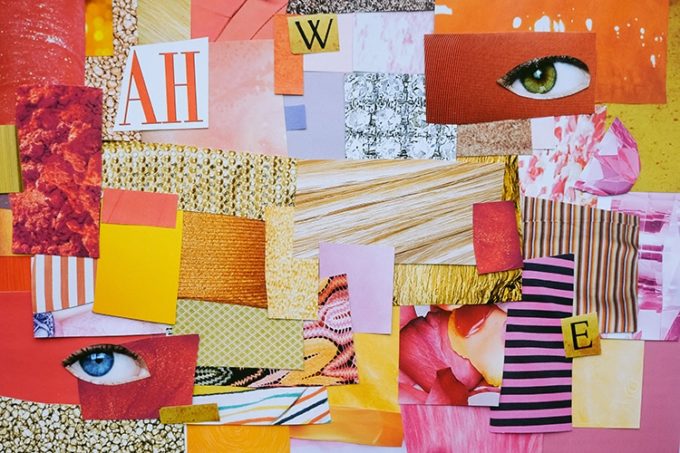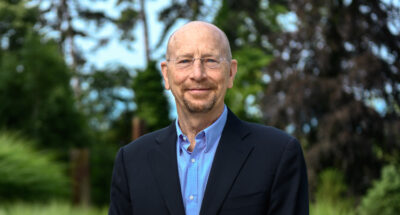
“We were so scared of our IPO”: Leaders Unplugged with former On-CEO Marc Maurer
Marc Maurer shares how ON grew from startup to IPO by defying hype, focusing on purpose, and leading with humility in this candid Leaders Unplugged episode....

by Susan Goldsworthy Published May 7, 2022 in Leadership • 5 min read
One of the myths in today’s society is that not everyone is creative. One of the myths in business is that the leader must have all the answers and provide solutions. In fact, to solve the multitude of problems facing the world today – from the climate emergency to gaping inequality – business leaders have to co-create in a far more collaborative and inclusive manner to harness the collective power of creativity within their organizations.
To do this we have to re-connect with the four different ways of knowing: propositional (intellectual knowledge, theories and ideas); practical (through our actions and skills); experiential (being aware of and attuned to our senses, our bodies and our embeddedness in the living world); and presentational (creative expression through, for example, art, storytelling and music). By marrying these four ways of knowing, we have a far better chance of solving the challenges we face so that we can find ways to thrive in a changing world.
So how can we foster creativity into organizations?
We are all conditioned to conform and some conformity is necessary in society. Most people would feel uncomfortable if a co-worker were to turn up naked to the office, for example. But often we are not even aware of our conformity. In business, by becoming aware of our conditioned assumptions, we can question the status quo, become more congruent, and cultivate the curiosity and creativity that leads to innovation.

To foster creativity within organizations, it is essential to create psychological safety, where people feel safe enough to take risks, to speak up and to question taken-for-granted assumptions. When people feel accepted, it liberates them to bring the best of themselves to the organization.
One way to create psychological safety and release creativity is by organizing collage workshops for business leaders. While executives may initially be reluctant or skeptical, they soon become absorbed in the task and the end result becomes a dialogical partner and mirror for learning more about themselves and each other. In fact, the biggest learning often comes from the feedback and reflection on the created artwork over time. Through presentational knowing, our experiential knowing can take visible form, informing our propositional knowledge and influencing our professional practice. The creative process enables the healing of divisive splits that abound in our fractured world.
While we often think of the artist as a solitary creature, art is the result of multiple inputs and lived experiences. Light artist Gerry Hofstetter, who projected various images onto the Matterhorn daily for five weeks during the first coronavirus lockdown, has spoken about the artist as a sponge that absorbs information from daily life, nature and travels, and turns that into art. Gerry shared that no art can exist in isolation. Works of art are the realization of the creative process involving numerous interactions and people. He expressed how we tend to limit people by labelling them. However, the truth is that everyone is creative. Organizations flourish when they create the conditions that enable individuals to unlock their inner creativity.
As a leader, it is up to you to set the frame for an organizational challenge or goal, but to then give your teams the freedom to come up with the best ways to achieve results. As artists know, inspiration often strikes when you are in a state of creative flow – an almost trance-like altered state of effortless concentration and total absorption. “As soon as my mind comes into it, I know it’s not going well,” says Javiera Estrada, a multimedia artist who works with film, photography and textual art. Estrada talked about the importance of periods of incubation. In business, we often place too much emphasis on ‘traditional’ work and long hours, when in fact it is more beneficial to allow people the time to reflect and be creative. Our best ideas often occur when we are not ‘officially’ working. Leaders who micromanage create a corrosive environment that extinguishes the spark of creativity. Instead, leaders who set the direction and then give people the space to experiment, to fail and learn from any failure find that their teams flourish as people ‘play to thrive.’
Ongoing research with more than 2000 executives indicates that, in today’s environment, more than 50% of leaders are operating from survival or burnout modes. Even those who say they are performing well, reflect that they tend to become irritated or frustrated more quickly. One of the most powerful yet simple things you can do to ground and center yourself is to spend time in nature. This doesn’t have to take much time. Noticing the nature around us in everyday life can make a significant difference to our wellbeing. Executives who implement a daily practice of briefly connecting with nature, (a tree, a plant, a vista, for example), taking a few mindful breaths, and then taking a photograph on their phones, and expressing gratitude for the moment of connection, report that they feel better equipped to manage stress.
Organizations that foster the creativity of their people become more inclusive workplaces. Noticing the way a company uses language or the way people dress can indicate how much they truly accept and value diversity. Many organizations use machine metaphors, such as ‘engines of growth,’ efficiencies and ‘key performance indicators.’ The problem is that people are not machines. We cannot work 24/7. To be healthy and productive, we need rest and recovery. When a machine breaks, you can change a part and it keeps on running. But when a human being breaks down it is more complex. A more holistic approach to leadership that values all ways of knowing is required for health and high performance. Language is really important. For example, instead of ‘human resource’ why don’t we use ‘human potential’? If you go to an organization where people present themselves differently or office space is more dynamic and colourful, it is often a sign that creativity is accepted and embraced.
Susan Goldsworthy, OLY, Affiliate Professor of Leadership, Communications and Organizational Change, shared on a panel discussion with artists Gerry Hofstetter and Javiera Estrada at the St. Gallen Symposium

Affiliate Professor of Leadership, Communications and Organizational Change at IMD
Susan Goldsworthy OLY is an Affiliate Professor of Leadership, Communications and Organizational Change at IMD. Co-author of three award-winning books, she is also an Olympic swimmer. She is a highly qualified executive coach and is trained in numerous psychometric assessments. She is Director of the IMD Executive Coaching Certificate and Program Director of the Leading Sustainable Change program.

July 8, 2025 • by Alyson Meister, Marc Maurer in Leadership
Marc Maurer shares how ON grew from startup to IPO by defying hype, focusing on purpose, and leading with humility in this candid Leaders Unplugged episode....

July 7, 2025 • by Richard Baldwin in Leadership
The mid-year economic outlook: How to read the first two quarters of Trump...

July 4, 2025 • by Arturo Pasquel in Leadership
Susanne Hundsbæk-Pedersen, Global Head of Pharma Technical Operations at Roche, shares how she has navigated the various pivots in her career, and the importance of curiosity, optimism and energy. ...

July 3, 2025 • by Eric Quintane in Leadership
Entrepreneurial talent who work with other teams often run into trouble with their managers. Here are ways to get the most out of your ‘boundary spanners’...
 Audio available
Audio availableExplore first person business intelligence from top minds curated for a global executive audience